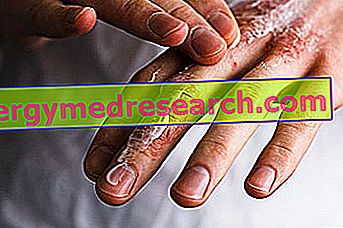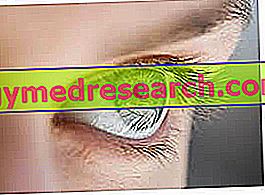According to the provisions of the current regulations on the subject, the processed foods are:
"food products obtained from the processing of unprocessed products. These products may contain ingredients necessary for their processing or to give them specific characteristics". In this case, by ingredients we mean additives, dyes, etc. and some substances capable of giving particular characteristics to the product (eg fruit, spices, herbs etc.)
Unprocessed foods, on the other hand, are all those foodstuffs that do not consist of more than one ingredient and, furthermore, have not undergone a significant transformation before being sold. We report also in this case the definition foreseen by the European regulations:
"Unprocessed foods are food products that have not undergone processing, including products that have been separated, sectioned, divided, sliced, boned, minced, skinned, crushed, cut, cleaned, trimmed, peeled, ground, chilled, frozen, frozen or thawed "
Based on these definitions, the vast majority of foodstuffs fall into the category of processed foods. Except for fruit and vegetables, eggs and a few other products that are marketed without having undergone any type of processing, many commonly used foods such as pasta, olive oil, vegetable preserves and breakfast cereals are in reality of processed foods.

However, nature is not always so generous and, in the vast majority of cases, natural transformations alter the quality of food to the point of causing foodborne infections or poisoning in extreme cases. Also for this reason, man has always selected the best techniques to make food safer, more palatable and storable for longer. Until a few decades ago these techniques were mostly of natural origin, such as salting, preservation in oil, vinegar or the smoking of meat.
With the advent of industrialization and with the radical change in the life habits of the population, new substances have been introduced that, added to food, improve their characteristics and shelf life. These are the so-called "chemical additives", substances which, despite rigorous controls on their safety, frighten and alarm consumers.
In reality, the category of artificial food transformations is much broader and includes many techniques, some of which are harmless and beneficial and others that are not entirely without side effects.
In general, the "artificial" transformation must nevertheless be considered a positive factor, capable of increasing storage times and preserving the characteristics of the product for a long time. Think for example of frozen vegetables, whose content in nutrients (vitamins and mineral salts) remains practically unchanged even after months.
At other times food processing is carried out to improve its organoleptic characteristics and make them more appealing to consumers. And it is precisely in some of these cases that processed foods can become enemies of our health. For example, consider the large addition of salt to many packaged foods (snacks, sausages, baked goods, etc.), to that of sugars in sweets and beverages (sucrose, glucose syrup, fructose syrup, etc.) or to oils, poor quality margarines and fats (tropical oils and fats, margarine, etc.).
We must also consider all those potential harmful effects that, according to some studies, would have certain chemical additives. Unfortunately it is not easy to find one's way among hundreds of different substances, some of which are prohibited in certain countries and granted in others. The possible interaction between the various additives and the potential long-term effects linked to their chronic intake should also be considered.
Despite the strict controls we are bombarded with on a daily basis by these substances which, while on the one hand offer a whole series of advantages to the consumer, on the other hand bring significant economic benefits to those who market the foods that contain them. In fact, we often resort to the use of chemical additives as they are less expensive than natural ones and can significantly improve the organoleptic qualities of a poor product.
Following is a brief list of chemical additives to be used in moderation, based on what emerged from various studies that testify to its dangerousness:
"DANGEROUS" ADDITIVES | |
| Erythrosine (E127) | dye widely used in the confectionery industry to give the food a reddish color. Banned in some countries, it appears to interfere with thyroid activity |
| Benzoic acid and derivatives (E210 to E219) | contained in preserved fruit and alcoholic beverages; due to their potential toxic effect they are prohibited in some countries |
| Sulfur dioxide derivatives (E220 to E228) | used above all in drinks, in particular in alcoholic ones, in high doses or in hypersensitive subjects, they have a toxic effect, are irritating and can cause severe headaches |
| Hexamethylenetetramine (E239) | used in some cheeses, it causes gastrointestinal problems |
| E249 E250 or Nitrite | contained above all in cured meats and preserved (but not only) meats have a potential carcinogenic effect |
| Phosphoric acid derivatives (E338 to E343) | they are used as acidity correctors but subtract calcium from the body and can favor the appearance of osteoporosis |
| Polyphosphates (E452) | contained in meat and cheese, they remove calcium from the body and can promote the appearance of osteoporosis |
| Sodium glutamate (E621) | contained in many sausages, condiments and stock cubes (it is a flavor enhancer). Monosodium glutamate contains about a third of the sodium present in table salt and is used in smaller quantities. In any case, those who follow a low-sodium diet should reduce the consumption of processed foods that contain it. The hypotheses on its toxicity arose in the past have never been confirmed. |
Unfortunately, on the subject of "chemical additives" there is a lot of confusion generated by incorrect information that relies on consumer fears. However, if we look at the previous table, we realize that the foods with the highest risk (cheeses, preserved meats, sweets, sugary drinks and alcoholic beverages) are precisely those that should be moderated regardless of the presence or absence of chemical additives. Only a healthy and balanced diet can therefore provide us with all the substances we need while protecting us from harmful ones.
See: Food tips
Functional foods



